Safes made of good quality must always come with a fire rating. This suggests that the safe has been tested to see how they resist to heat. Safes are usually evaluated to see how well they can tolerate external pressure. Burglar-rated safes are fairly common.
They show the amount of time a safe can withstand a burglar’s attempt at a break-in. Similarly, a fire rating is nothing but the rating given to show how much heat a safe can withstand. It shows if your fireproof safe is really worth it.
Have you ever wondered how such fire ratings are calculated? They are evaluated by tests to see how long a safe can withstand a specific temperature for a specific amount of time.
The safes are put through a series of tests. The most common of these tests involve putting the safe into furnaces to test how fire-resistant they are. Safes are also dropped from great heights to see how well it can resist explosions.
Fire Rating For Home Safe & Gun Safe
Quick Navigation
The fact that safes are vulnerable to fires is not known by many people. In 2015, it was estimated that there was a loss of $14.3 billion due to fires in the U.S. Statistics also state that 15,000 fires break out every year due to home electrical mishaps. Experts suggest that sometimes it becomes difficult to prevent a fire. But, it is always possible to prevent damage to your belongings.
This is where a fireproof safe comes into play. Fire-resistant safes have been around since 1917. Safes used to be made with water and cement. The water evaporated and the cement would protect the valuables from the heat. But, as of today, most safes in the market are layered with fire-proof materials.
How Do I Understand A Fire Rating?
Fire Ratings of safe hinge upon a common factor: time. The time that the safe can resist damage due to a fire is the most important factor of a fire rating. For example, let’s take a safe which is rated 60 minutes for 1200℉ This means that the safe can maintain an internal temperature of 350℉ or 60 minutes, while being exposed to an external temperature of more than 1200 degrees.
The Importance Of 350℉
Most fireproof safes must aim to sustain an internal temperature of less than 350℉. It is a standard that is widely followed for fireproof home safes. This is because paper starts to lose color above 350℉ and it will burn at 451℉. Guns can withstand temperatures up to 500℉.
Gun Safes are obviously going to withstand the heat longer, but it is better to be careful as different materials react differently to fire. A fireproof safe can have a 1, 2 or 3-hour time classification. The general consensus is that the higher the fire rating, the better it is for your safety.
Various Fire Ratings For Safes
Private Label Testing – Most safe manufacturers certify and test their safes with the help of independent testing agencies. This is called Private Label Testing. The most common fireproof safe test involves placing the safe in a furnace. The inside of the safe is connected to an external computer. The furnace is heated up to 1200℉.
The computer monitors how the inside of the safe reacts to this rise in temperature. If the internal temperature of the safe remains at 350℉, then the safe achieves a fire rating. The safe fails the test if the temperature goes above 350℉.
Factory Certified Ratings – Some safes also come with the label “factory certified”. This means that the safe has been tested by the manufacturer in their own factory. There are no independent agencies involved. A lot of factory-certified ratings are inaccurate. The safes are usually not even heated in a furnace. But, this does not mean that all factory-certified fire ratings are false. It is advisable that you do your research before buying a fireproof safe.
Many factors determine how your safe might react to fire. Like, for example, if you have a huge amount of fuel in your house, then the temperature might increase drastically.
This will lead to your safe also catching on fire. It is because of this that you should get a fire-rated safe for storing your valuables, documents or guns. You might get confused as to which fire rating you should opt for when buying a fireproof safe.
It is also difficult for an individual to compare the different ratings and decide which one suits them best. Different fire ratings are derived from different factors relating to the type, length and procedure of testing. We provide you with a comprehensive guide to different fire ratings, which will help you to choose a safe as per your needs.
1. UL Ratings For Home Safes And Gun Safes
Underwriters Laboratories are a safety organization headquartered in Illinois. It is an independent organization that educates the public about safety issues in products from a wide range of industries. UL ratings are nothing but the fire ratings given by this organization. The rating with an Underwriters Laboratories Mark is said to be a “UL Listed Product”.
These ratings are devised on the basis of various safety analyses conducted by UL. UL ratings are applicable for both home and gun safes. UL ratings not only indicate safety certification but also test the product quality.
a) Tests conducted to certify a UL-rated safe
b) Explosion Hazard Test
All UL rated equipment has passed through an explosion test. It basically consists of keeping a safe in a 2000℉ furnace for a period of 30 minutes. The safe shouldn’t explode during this process. Later, the safe is cooled down. If there are no ruptures on the safe, then the safe is said to have passed the explosion test. This shows that there is no heat build-up within the safe that might cause it to explode.
c) Fire Endurance Test
The fire endurance test is the most important part of certifying the fire ratings. This test is conducted in difference batches. Here is the classification of the conditions on which each batch is tested:
| Batch/ Class | Testing Time in the Furnace | Temperature at which it is Tested |
| A | 4 hours | 2000℉ |
| B | 2 hours | 1850℉ |
| C | 1 hour | 1700℉ |
| D | 1 hour | 1700℉ |
| E | 30 minutes | 1550℉ |
It is the standard fire protection test. A vast range of contents are placed randomly into the safe. The safe is fitted with humidity sensors. The safe is stored in a cool furnace. Next, the safe is exposed to a set of different temperatures ranging from high to low. A fire is lit inside the furnace. The gas and air supply are constantly monitored to make sure that the fire is even on all the 6 parts of the safe.
The furnace is shut off when it reaches the final testing temperature. The safe remains in the furnace for a specified period of time. Then, the contents are examined. The interior components of the safe are examined for damage caused by heat or humidity.
If the contents are not damaged, then the safe passes the fire endurance test. Also, the safe must not reach temperatures above 350℉.This test is designed to see how well a safe can endure a particular temperature.
d) Fire And Impact Test
This test is usually conducted after an endurance test. The safe is heated as per the batches used in fire endurance test. After 2 minutes, the safe is dropped from 30 feet onto a pile of broken bricks and concrete.
The height from which the safe drops is usually replicated to be around 3 stories high. Then, the safe is checked for any damage. After this, the safe is placed in the furnace for another temperature test.
It is then cooled and checked for any visible damages. This certifies the safe’s ability to withstand external damage caused by dropping or dragging. It certifies how the safe reacts to impact or pressure.
The impact resistance of the safe shows if the safe can handle other items being dropped on it as well. If the contents of the safe are usable, then the safe passes the test.
e) Combined Explosion Test
The safe is prepared in the same way as it is for the fire endurance test. The safe is inserted into a pre-heated furnace that has been heated up to 2000℉ It is kept inside the safe at the same temperature for around 30 minutes. There should be no explosions during this time. The furnace is allowed to cool and if the contents of the safe are not damaged then the safe passes this test.
f) UL 72 Class Fire Ratings
It is a test for the Fire Resistance of Record Protection Equipment. Record Protection Equipment includes things like insulated devices and safes.
|
UL 72 Class Number |
Fire Resistance Time |
What It Protects | Temperature that the Safe Can Withstand | Sustainable Internal Temperature of the Safe |
| UL Class 350 | 1 Hour & 2 Hours | Paper | 1700℉. | 350℉ |
| UL Class 150 | 1 Hour & 2 Hours | Computer Disks, Photographic film | 1700℉. | 150℉ |
| UL Class 125 | 1 Hour, 2 Hours & 3 Hours | Compact Disks, Data Drives | 1700℉. | 125℉ |
g) UL Class 350
This rating certifies that the safe can sustain an internal temperature of 350℉. It can withstand temperatures of over 1700℉. This class also has sub-classes of 1 Hour and 2 Hours which denote the time they can withstand the heat. These safes are ideal to store papers and documents.
h) UL Class 150
This rating certifies that the safe can sustain an internal temperature of 150 degrees Fahrenheit. UL Class 150 (1 hour) certifies that the inside of the safe will remain below 150 degrees, even if the outside temperature is much higher. This is applicable for UL Class 150 (2 hours) as well. These safes are ideal to store non-paper objects like photographic films or tapes.
i) UL Class 125
This rating certifies that the safe can sustain a temperature of 125 degrees Fahrenheit when it is exposed to temperatures of 1700 degrees or more. There are 3 sub-classes: 1 Hour, 2 Hours, and 3 Hours.
They show how long the safe can withstand the heat. This is the highest level of protection according to UL ratings. Safes that have this rating don’t allow humidity levels above 80%. These safes are ideal to store a wide range of objects including electronic media like CDs, disks, data drives, etc.
Although these class ratings work in different time periods, it is important to remember that actual UL tests are performed for 80 plus hours. This means that safes are designed to last longer when they are exposed to heat.
j) UL Impact Rated
Impact-rated refers to products that have been rated to see how well they react to extreme force or shock. An external force is applied to the safe over a short duration to see if the safe can endure it.
To achieve this rating, safes containing documents are heated to 1550 degrees Fahrenheit. Once it reaches this temperature, the safe is raised to the height of about three stories.
It is then dropped directly onto a pile of bricks and immediately taken to the furnace. Here, it is heated again. If the temperature doesn’t cross 350 degrees and if the documents inside are intact, then the safe qualifies to be an Impact Rated Safe.
2. ETL Ratings for Gun Safes
ETL Laboratories has been in the field of performance testing since 1896. TL rated safes are combination safes, which protect against cutting, welding and other forms of safe abuse. You can have a heavy-duty 3-phase welding machine at your home.
A TL rating will give you an accurate idea of exactly how fireproof your safe really is. TL ratings consist of a numeric component. Sometimes, this is used to indicate the amount of time that a safe can withstand fires or attempts at a break-in.
For example, a 15 rating means that the safe can tolerate heat or pressure for 15 minutes. Apart from certifying the fire resistance of a safe, TL ratings tend to look at the elimination of weak points within a safe.
a) ETL Fire Ratings
|
ETL Class |
Fire Resistance Time | Temperature that the Safe can Withstand | Sustainable Internal Temperature of the Safe |
| ETL-45 | 45 minutes | 1200℉. | 350℉ |
| ETL-90 | 1 ½ hours | 1200℉ | 350℉ |
| ETL-120 | 2 hours | 1200℉. | 350℉ |
b) ETL – 45
The gun safe is kept in a test oven for about 45 minutes. After 8 minutes, the temperature of the oven is increased to 1200℉. This temperature remains constant for the next 37 minutes. The safe is said to pass the test if it can sustain a temperature of 350℉ during the entire 45 minutes of testing.
c) ETL- 90
The gun safe is placed within the test oven for a duration of 1 ½ hours. The temperature is increased to 1200℉ after 8 minutes. The external temperature remains constant. If the inside of the safe maintains a temperature of 350℉, then the safe achieves the ETL-90 rating.
d) ETL-120
The same procedure is followed with this rating as the above mentioned ones. But, this time the safe is placed in the oven for 2 hours. The temperature of the oven is raised to 1200℉. The safe must maintain a 350℉ internal temperature for 2 hours to pass this test.
3. British Thermal Unit (BTU) Ratings
British Thermal Units are used to measure the heat output. BTU Ratings are based on the layers of the fireboard and the thickness of the steel used in a safe. The BTU ratings add the total heat the fireboard can take, with the total heat that the steel layers can bear. The final BTU ratings tell us how much heat a safe can bear when it’s internal temperature increases above 350 degrees. The BTU fire rating increases proportionately to the amount of heat a safe can take.
a) BTU Fire Ratings
| BTU Rating | Fire Resistance Time | Temperature that the Safe can withstand | Sustainable Internal Temperature of the Safe |
| 62,000 BTUs | 30 minutes | 1200℉. | 350℉ |
| 80,000 BTUs | 45 minutes | 1200℉. | 350℉ |
| 92,000 BTUs | 75 minutes | 1200℉. | 350℉ |
| 95,000 BTUs | 1 ½ hours | 1200℉. | 350℉ |
| 131,000 BTUs | 2 ½ hours | 1200℉. | 350℉ |
b) 62,000 BTUs
The safe is tested in a furnace. The temperature is slowly raised till it reaches 1200℉.The safe has to maintain a temperature of 350℉ for 30 minutes to achieve this rating.
c) 80,000 BTUs
The safe is tested in a furnace at the temperature of 1200 ℉. The safe has to maintain a temperature of 350℉ for 45 minutes to achieve this rating.
d) 92,000 BTUs
Safes are placed in a furnace. It is exposed to a temperature of 1200℉ for 75 minutes. If the safe does not exceed 350℉ then it said to have passed this test.
e) 95,000 BTUs
Safes are placed in a furnace at 1200℉ for a period of 90 minutes. The safe must maintain an internal temperature of 350℉ for the entire duration of the test.
f) 131,000 BTUs
This test is conducted for the longest period of time i.e. 2.5 hours. The inside of the safe has to sustain a temperature of 350 ℉while being exposed to outside temperatures of 1200℉ and above.
4. Korean Industrial Standard (KIS) Ratings
The Korean Industrial Standard Ratings mainly give a KSG-4500 rating. The KSG-4500 is a rating given to safes after rigorous testing. The safe is placed in a furnace for 1 hour and temperatures are allowed to exceed 1000℉. To achieve this rating, the inside of the safe must maintain a temperature of 177℉. After this, the safe is tested for 2 hours in a furnace. The temperature inside the furnace keeps rising till it reaches 1850℉. The safe is kept inside this furnace for 30 minutes or more. It is then dropped from a height of 13 feet and reheated for another hour. Safes with KIS ratings have great fire resistance.
Components of A Safe That Make it Fireproof
1. Fireboard
A fireboard is a layer that is present inside the depths of the safe. It is basically drywall made of gypsum. Almost every home safe in the market today has a fireboard. There should be at least 2 to 4 gypsum layers inside a safe. Fireboards range from being 1/4 to 5/8 inches thick. Moisture is present inside the fireboard.
When it is heated to 262℉, this moisture is released. Due to this, the inside of the safe remains cool and maintains a temperature range of 200℉- 300℉. It is advisable to get a safe that has many layers of fireboard. An increase in the number of fireboard layers will lead to an increase in the cooling of the safe.
2. K-wool
K-wool is a product that is made from ceramic fibers. It is essentially a blanket made of insulating material. This material is made up of fibers. The fibers are interconnected in such a way that it gives the material extra strength. It is used in safes because it is extremely resistant to heat and thermal shock. It stores a very low amount of heat which makes it ideal to use in safes.
3. Steel Sheets
Fireproof safes are mainly made from thin steel sheets or steel plates. A number of sheets are melted together to form a solid steel layer. These layers form the hard exterior and interior of a safe. The interior of the safe should also be covered with fire insulation. There should be no metals, bars our cutouts as they are vulnerable to fires.
4. Fire Protected Concrete
Fire Protected Concrete (FPC) is a concrete layer that may be used inside a fire-proof safe. Concrete in and of itself has a resistance to fire. Because of this property, concrete is heavily used in homes and gun safes. This concrete is usually placed between the two layers of steel inside your safe. It acts as an insulator and blocks the heat from getting to the interior of the safe. You can get a safe that has FPC in the walls as well as in the door of the safe. You can have portable fireproof safe for traveling.
5. Fire Seal
Fire Seals can usually be found on the door of the safe. It is a seal that will expand itself in the case of a fire. The seal can expand up to 10 times its original size. As the seal expands, it creates a path for the fire and smoke to escape out of the safe. The fire travels down the path, leaving your belongings unharmed. It is also important to ensure that the door of the safe is thick. Lightweight doors give easy access to fires.
6. Fire Box
Fire Boxes are a small lockboxes in which you can place your valuables. These boxes are placed inside the fireproof safe to ensure give it an extra layer of protection. Fireboxes are usually used to store fragile items. Most popularly people use a drop slot firebox safe to keep there valuables safe.
Things To Remember Before Buying Fireproof Home And Gun Safes
1. Suitability
Safes must be bought according to the purpose they are going to be used for. You need to buy a safe for your particular requirements. Check the area you need to cover and the items that you want to store. For a gun, check out the size specifications as well. If need be, then consult a home security expert who can evaluate safes. There are also many safe consultants who can advice you about the best safe you can buy.
2. Cost
Many safe owners might not want to spend extra money on getting a fireproof safe. But, you should keep in mind that the safe might save you from millions of dollars in damages. If the value inside the safe is worth protecting, then ensure that you try your best to protect it.
3. Tested Safes
You must ensure that the safe you buy is tested and certified with appropriate fire ratings. If you are a consumer looking for a good fireproof safe, then you should consider getting safes that have been tested by UL or ETL, as they are well-established testing agencies. It is essential to get it tested by an approved agency. This will ensure that the ratings are accurate.
4. Warranties
Safes are definitely not a cheap investment. Hence, it is important that you check all the warranties and deals on your safe. This will help you to exchange or remodel your safe in the future.
5. Weak Spots
Some safes tend to have specific weak spots that can become vulnerable to fires or burglars. Door jambs, hinges and the corners of safes are easy targets. You must ensure that if there are any weak spots then they are reinforced and strengthened.
6. Insurance
There are certain discounts that can be availed if you own a fire-rated safe. You can get in touch with your insurance agent with proper documentation for these benefits.
7. Water Resistance
Water-related accidents are as dangerous as fire-related ones. Important documents are often lost because they are exposed to moisture. Even during a fire, it is very likely that the water used to put out the fire might end up damaging your valuables. You can avoid this by investing in a safe that is both fireproof as well as water-resistant. Moreover you can install an humidity monitoring hygrometer in your safe.
Sometimes, it is easy to forget that safes need safeguarding too! Most home fires don’t exceed the temperature of 800℉ to 1200℉. Through the above information, it is clear that home safes and gun safes are tested at temperatures much higher than that of an average fire. This solidifies the fact that fireproof safes are much more likely to protect your valuables than safes that aren’t fireproof. You can have a great water resistant floor safe for your office.
Experts always recommend getting a safe that can resist heat for a minimum of 1 hour. A fireproof safe will give you peace of mind that your belongings are protected. Thus, make it a point to get a safe that has a certified fire rating which will leave you with no worries about your valuables. Also, make sure that you choose from the best fireproof safes out there.

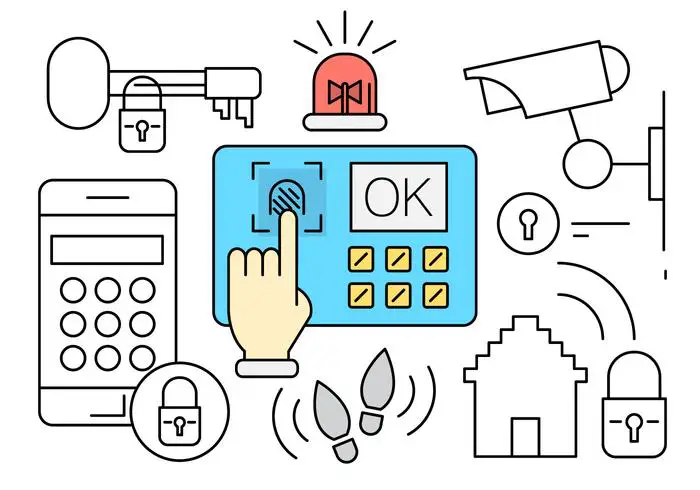
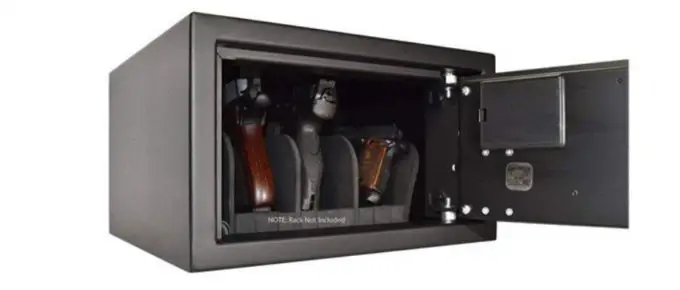
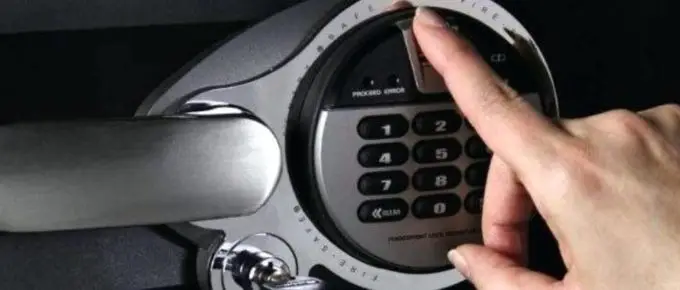
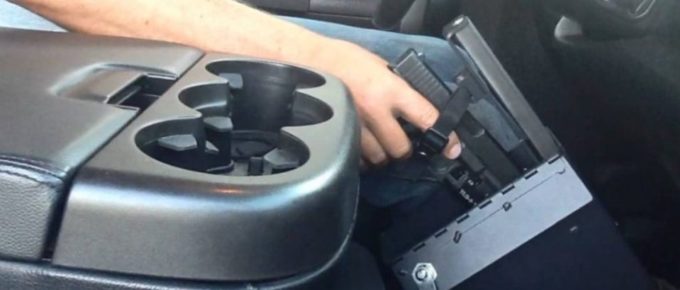
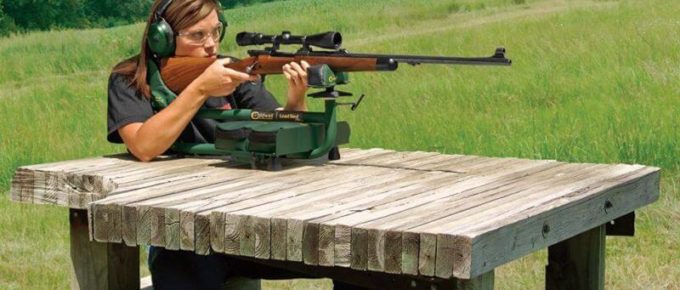
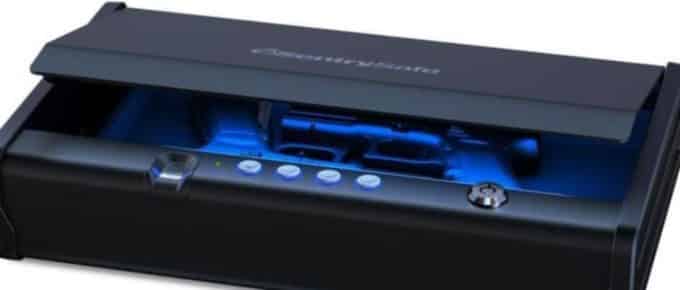
Leave a Reply